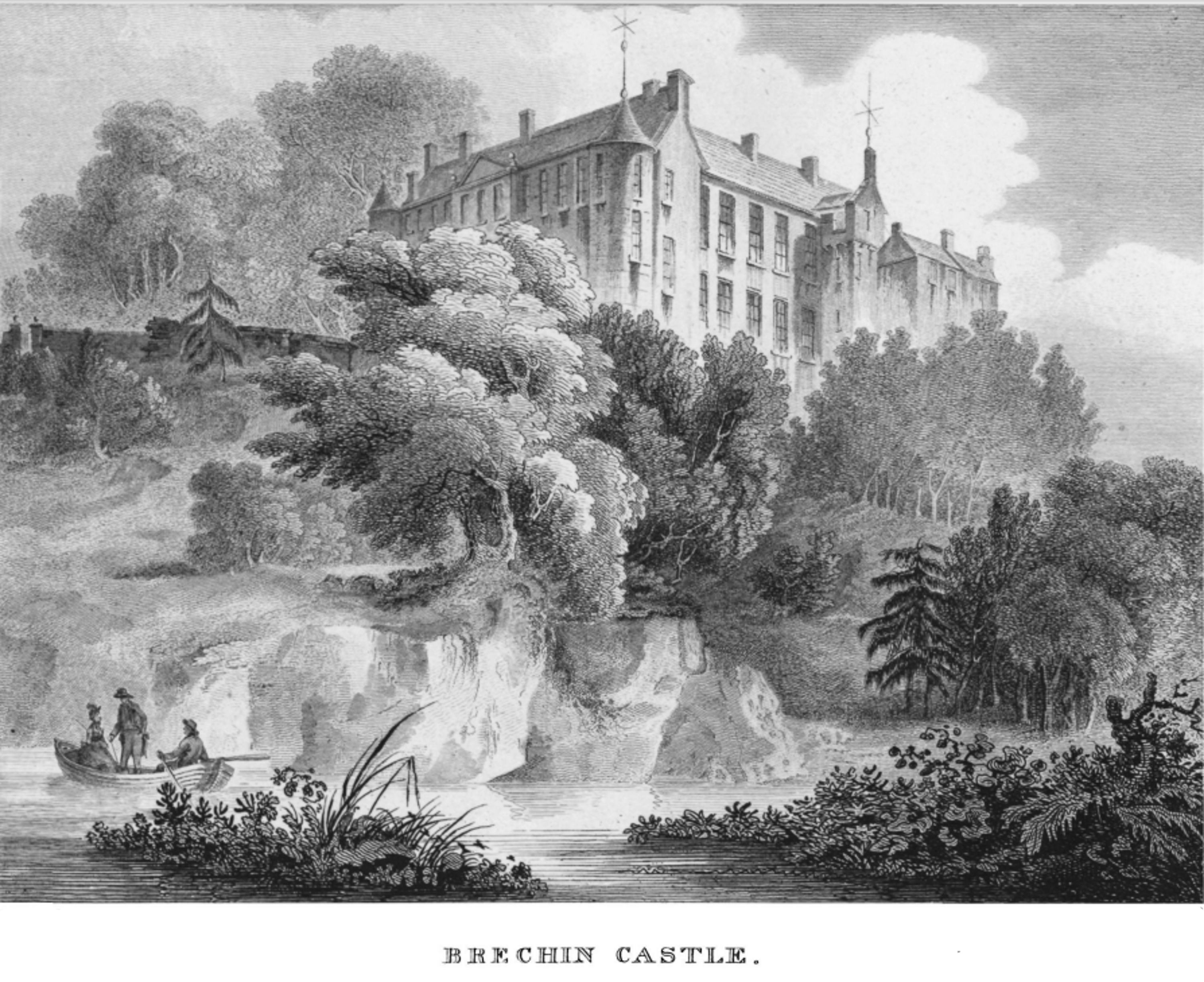Brechin Castle – Scotia Depicta (1804)
The town, or city, of Brechin, as the name denotes, is built on a hill; Brunichaun, in the Gaelic language, meaning the top of a declivity. Perhaps, however, it is derived from Breaichuain, a view of the firth, as from the east you have a fine view of the bay of Montrose, which bounds the county of Angus on that side, at the distance of about eight miles. It is of very considerable antiquity, and was formerly a bishop’s see, possessing a cathedral, and also a convent. The South Esk River runs past the suburbs on the south, on the bank of which stands the present house, or castle.
This river, like most of those in mountainous countries, frequently rises very suddenly to a considerable height; but the site of the castle is much above its most violent swellings. Nothing can be more picturesque than the view of this castle, as given in this plate; the drawing of which was taken in September 1800.
The Usk running along the foreground, with its opposite rocky bank, partially naked, and partially covered with trees and brush-wood, and the whole crowned with the castellated building, forms a scene at once beautiful and grand. Of the ancient castle of Brechin no vestige remains. In 1303 it underwent a long siege, and was gallantly defended, though attacked by a powerful army under Edward the First: and notwithstanding all the efforts of that potent prince, the brave governor, Sir Thomas Maule, held out for twenty days; at the end of which time he was slain by a stone, thrown from an engine, on the 20th of August, when the place instantly surrendered. Patrick Maule, a descendant of the governor, was in 1646 created Lord Maule of Brechin, and Earl of Panmure. This estate, which is very considerable, always goes to the youngest son, and never with the title; and is now the property of the Honourable William Maule, who constantly resides at the castle, and whose appropriate and liberal taste for improvement has added much to the peculiar and natural beauties of the spot.
